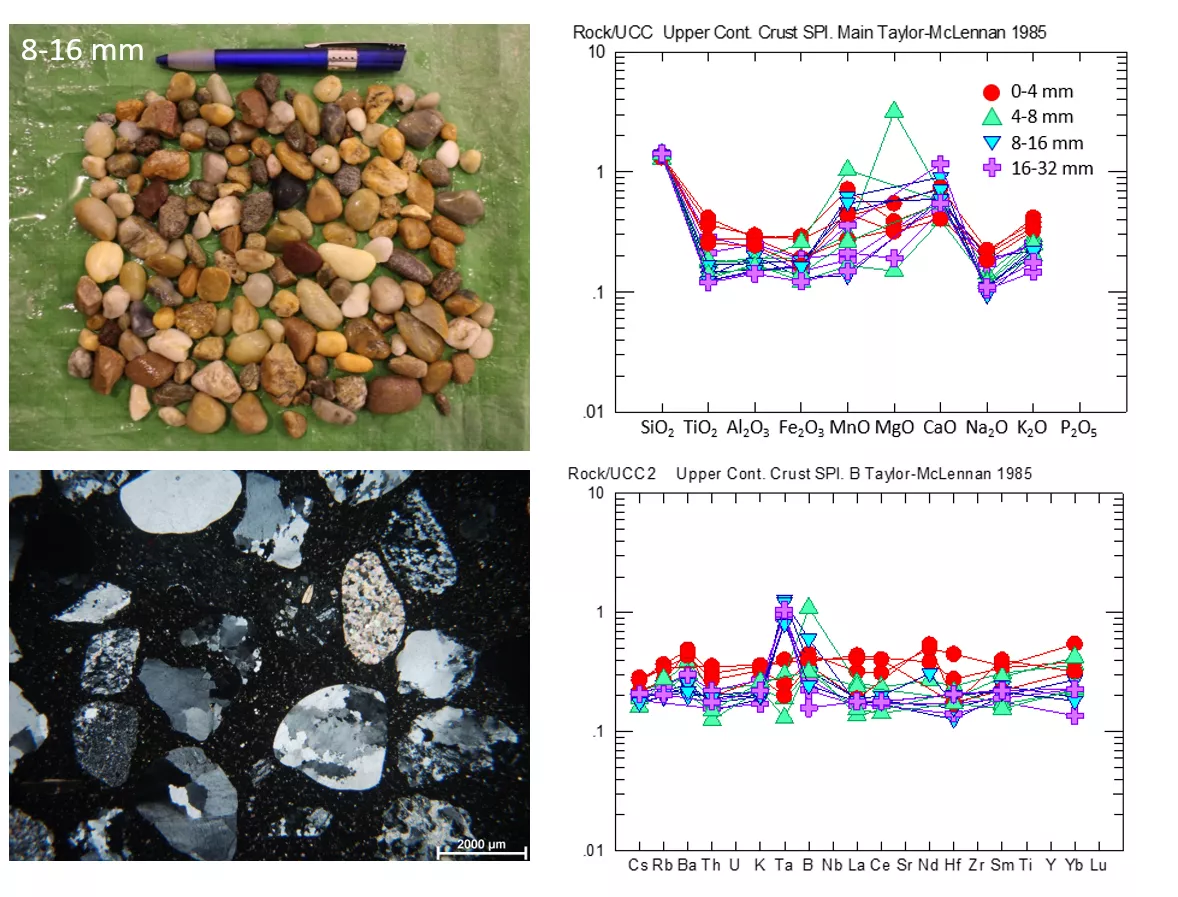Scientists of the Nuclear Analytical and Radiography Department (NAL) at the Energy and Environmental Safety Institute of the ELKH Centre for Energy Research studied the activation susceptibility of the pebble-sand fraction of radiation-shielding concretes around nuclear reactors. During the project, a strong research network was formed with the Hungarian Atomic Energy Agency (OAH), the Non-Profit LLC for Quality Control and Innovation in Building (ÉMI), and, internationally, with the Czech, Polish, Slovakian and Korean participants of the RADCON project (NKFIH 127102).
Concrete is a widely used building material that is a mixture of natural raw materials and – to a smaller extent – artificial additives. The raw materials and the mixing ratios determine the structural properties of the concrete, e.g. compressive strength, density, and aging properties. These properties are quantified via physical and chemical material testing methods.
The domestic relevance of the research is the construction of the new Paks II nuclear power plant, where the concrete structures are preferably to be made from domestic raw materials. Therefore it is necessary to establish competences in the development of concrete that has adequate radiation resistance and favorable aging and activation characteristics. One of the important contributions to this goal is the composition determination and experimental activation testing of concrete samples and their raw materials via neutron irradiation.
In addition to the established industrial standards, concrete to be used in nuclear technology has to meet additional requirements. Concrete structures next to the active zone of the reactor, for instance, have to withstand high neutron- and gamma dose rates and elevated temperature for decades, while preserving its mechanical integrity and keeping the neutron-induced activation as low and as transient as reasonably achievable, i.e. the neutron-irradiation produces radioisotopes during the service life. Further, these concrete structures serve not only as structural components, but also as biological shielding, so the radiation-attenuation feature is also an important aspect.
The short- and medium-lived radioisotopes might affect the operation and maintenance routines, while the long-lived radionuclides can emit significant dose rates even after the shutdown. This has to be assessed in future decommissioning operations. For economic reasons, attempts shall be made to minimize the amount of radioactive waste. The future levels of radioactivity can be significantly influenced by the composition of the concrete, in particular with the levels of the trace contaminants introduced via the raw materials. So keeping the ALARA principle in mind, the best opportunity to take action is when the concrete is being manufactured. With careful selection of the raw materials, the difficulties and expenses during a future decommissioning can be reduced.

The NAL research team has representatively sampled quarries at four large gravel mining regions in Hungary. The mineral compositions of pebble and sand types have been examined by optical microscopy, while the chemical compositions of the samples have been determined by nuclear analytical methods (instrumental neutron activation analysis: NAA, and prompt-gamma neutron activation analysis: PGAA). Nuclear analytical methods are the best choice for this exercise, as they are based on the nuclear reactions to which the concrete bodies will be exposed during operation, and instead of the elements, the relevant isotopes can be directly determined with high accuracy and high metrological quality.
The elemental analysis focused on the trace elements from which irradiation creates long-lived radioisotopes (141Ce, 60Co, 134Cs, 152Eu, 154Eu, 59Fe, 181Hf, 124Sb, 46Sc, 182Ta, 160Tb, 51Cr, 233Pa, 151Sm, 85Sr, and 65Zn) thus have importance in the activation of concrete around the reactor tank. The listed isotopes have significant radioactivity in the exposed concrete, even one year after the end of irradiation. Sand-gravel raw materials, in which the precursor elements are present in higher concentrations, are less suitable for nuclear applications.
Based on their analysis, a comprehensive raw material database was established. It was found that samples from different mines exhibit significantly different levels of impurities. On this basis, it is possible to identify the appropriate sources of adequate raw materials in Hungary, in which the amount of isotopes prone to activation is small, so that concrete with a low-activation tendency can be made from them.

Petrographic and geochemical studies of natural aggregates (colors at the plots correspond to different size-fractions)
Research results confirmed that the preferred gravel and sand types for nuclear-grade concrete are the quartz-rich, more mature (deposited after longer sediment transportation) gravel formations. Fine-to-coarse aggregates with higher concentrations of long-lived radioisotope precursors (e.g. gravel formations containing higher quantities of igneous or metamorphic originated rock types, or heavy minerals) are not adequate for shielding concrete purposes. On this basis, the gravel source regions that are well-suitable for the production of radiation protection concrete were identified.
This research has been financially supported by the Hungarian Atomic Energy Agency (OAH), the Non-Profit LLC for Quality Control and Innovation in Building (ÉMI), and by the project NN 127102 of the National Research, Development and Innovation Office of Hungary.
Research team at EK: Katalin Gméling, Veronika Szilágyi, Ildikó Harsányi, László Szentmiklósi, Tamás Fekete